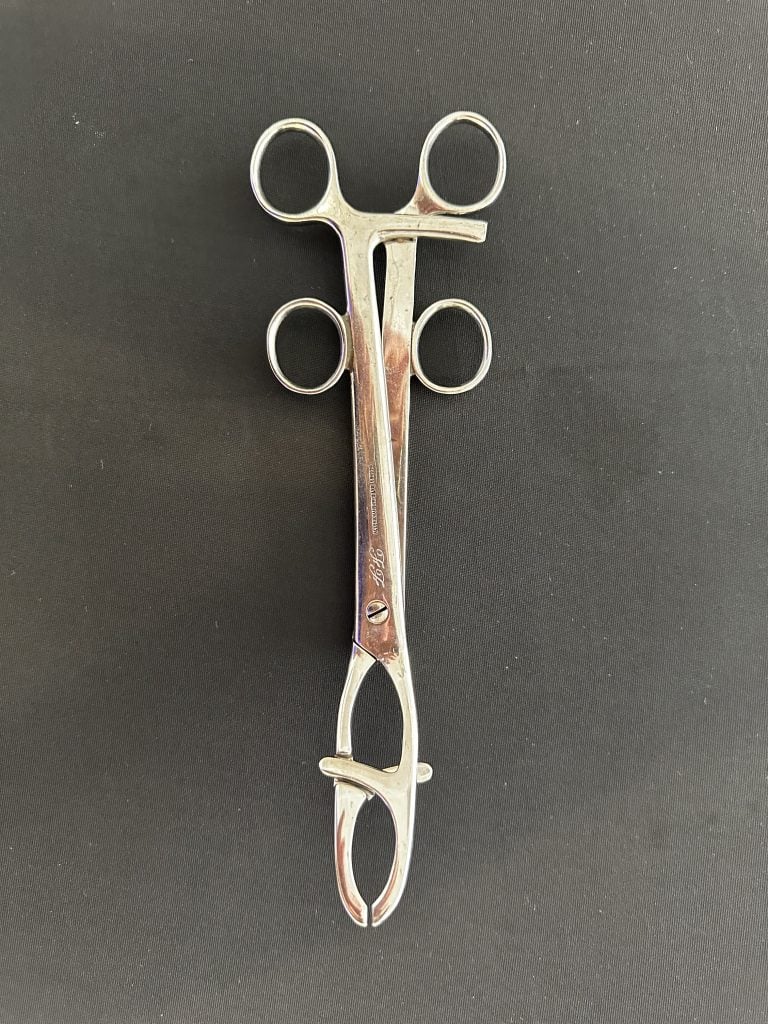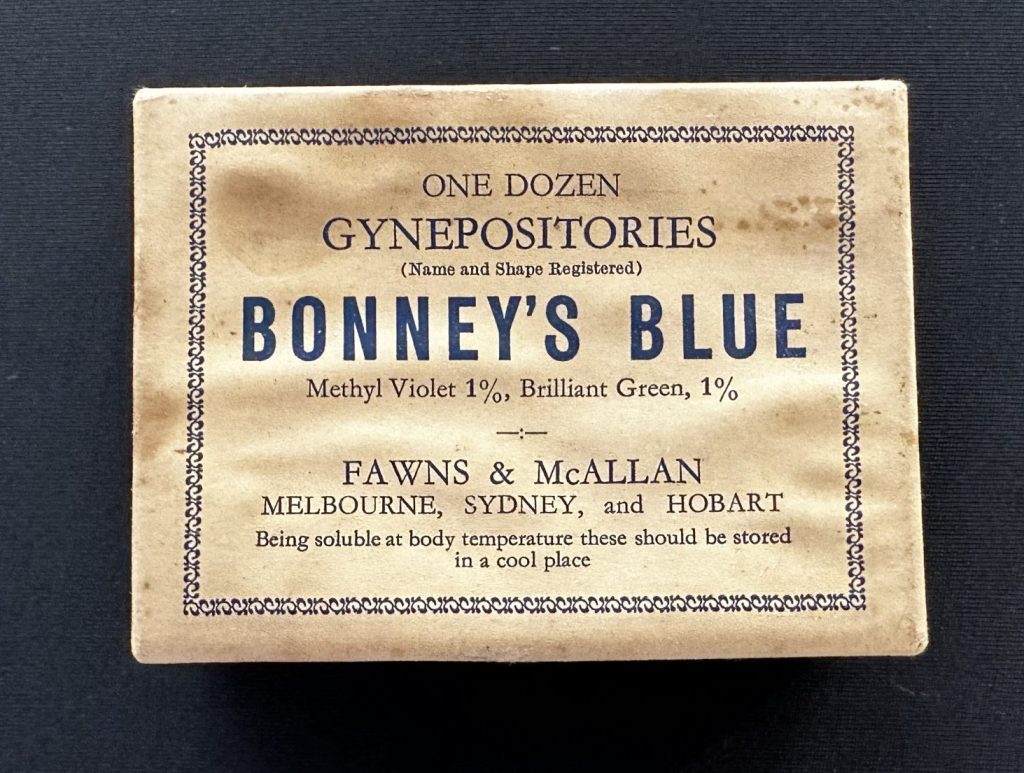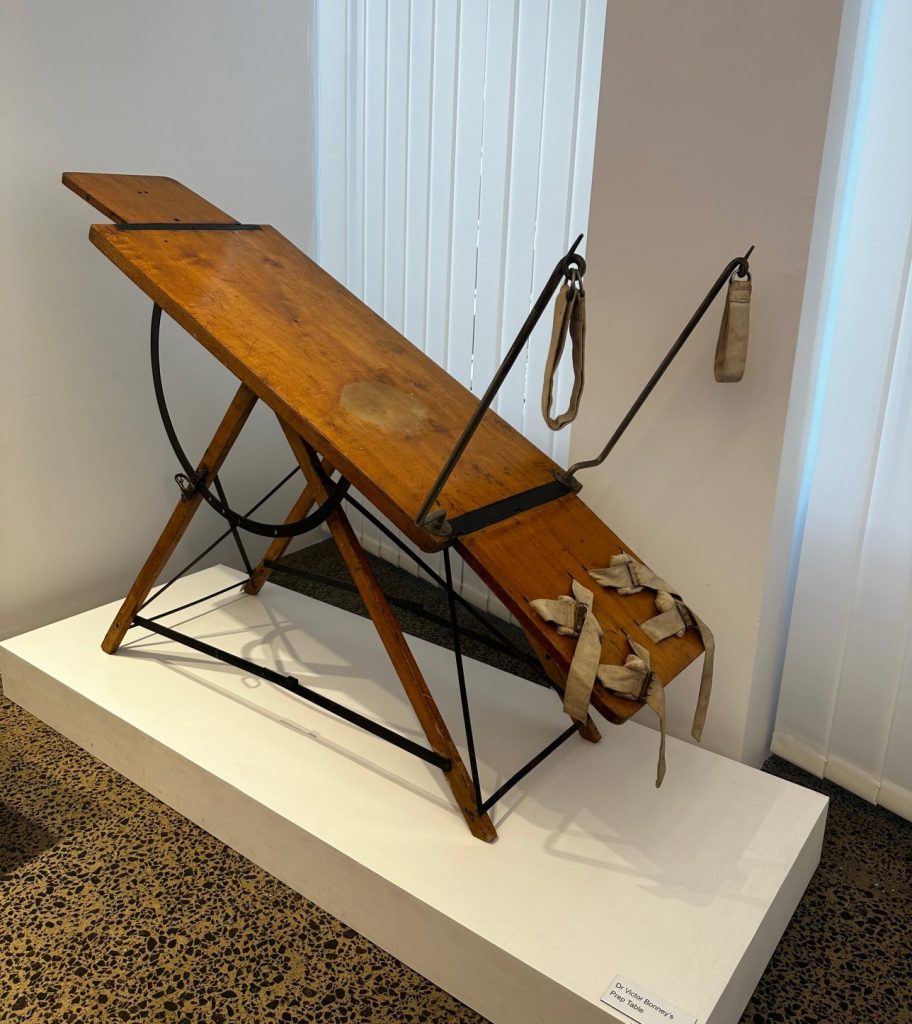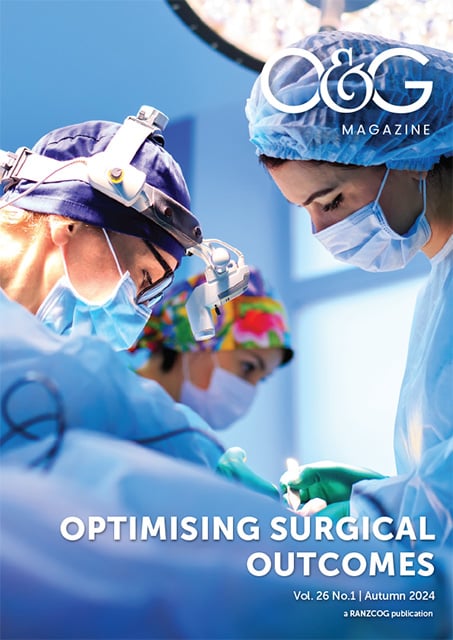Dr Victor Bonney left a remarkable legacy in the field of obstetrics and gynaecology. Here, we explore some of the College’s historical collection to discover more about the gifted surgeon and his work.
Born in London in 1872, Bonney was a gifted surgeon whose advances in radical hysterectomy and myomectomy saved countless women from death, debilitating illness, and infertility. Bonney was also a great innovator who devised a number of his own surgical instruments, as well as an antiseptic solution which has come to be his most enduring legacy – Bonney’s Blue.
Mastering myomectomy
One of Bonney’s most notable achievements was his development of a successful procedure for myomectomy. After his wife developed fibroids and had her uterus removed early in their marriage, Bonney took a great interest in the practice of conservatism in surgery. Prior to Bonney, myomectomy “had fallen into disuse because of excessive blood loss during the operating and the infections that commonly followed”1, but Bonney saw an opportunity to revolutionise this practice.

Bonney’s myomectomy clamp used by Dr Frank Forster, kindly donated to RANZCOG by Dr Frank Forster. Photo: RANZCOG
In his words:
“I set myself to make myomectomy so feasible, successful and safe as to render it a fair alternative to hysterectomy in every case…Excepting only in a very few instances…I have succeeded, and now enter the operating theatre free of the trammels which at one time too often compelled my hand against my heart.”2
Bonney’s crucial innovation was the development of a new surgical clamp, an instrument which is now referred to as Bonney’s myomectomy clamp. The clamp was ingeniously designed to cut off blood supply to the uterus by compressing the uterine arteries, immediately reducing the excessive blood loss that had previously been associated with the procedure.
Bonney’s success with this procedure was such that his clamp became a key part of the arsenal of gynae surgery and was widely used for myomectomy procedures for decades after his death. Although it is now seldom used, his innovation helped pave the way for some of the future technological advances that have shaped gynae surgery today.
Bonney’s Blue
In 1918, Bonney and bacteriologist Carl Hamilton Browning delivered a paper outlining the virtues of an antiseptic solution that they called “violet-green”. The solution was applied six hours before operation and stained the skin an “intense violet-black”, which lasts throughout the operation and “for a week or two afterwards”. It was offered as a marked improvement on iodine for sterilisation, as it had much longer lasting effect and caused “no irritation of the skin, nor of more sensitive surfaces such as the vulva and vagina.”3

Bonney’s Blue vaginal suppositories, kindly donated by Dr David Grodski in 2008. Photo: RANZCOG
This solution came to be known as Bonney’s Blue and proved to be a great boon for gynaecological surgery. On top of its antiseptic properties, the bright colouring of Bonney’s Blue gave it an additional function as “a beacon for the gynaecologist” during difficult abdominal hysterectomy surgery.4
Such was the impact of this innovation, that, despite his many other achievements, Roques proposed in 1953 that “to theatre-sisters, labour-ward sisters and young house-surgeons he [Bonney] will always be remembered as the discoverer of Bonney’s Blue.” 5
Bonney’s portable operating table
The College is fortunate enough to hold a personal connection to Bonney thanks to having one of his portable operating tables in the College’s historical connection.
The table was acquired by Dr Frank Forster, who was a relative of Victor Bonney’s widow, Mrs Annie Bonney. Dr Forster visited Mrs Bonney in 1953 following the death of her husband, whereupon, knowing of his interest in medical equipment, Mrs Bonney offered him the operating table, “which was stored in a canvas bag in the boot of his [Bonney’s] Rolls Royce.” 6

Bonney’s portable operating table, kindly donated to RANZCOG by Dr Frank Forster. Photo: RANZCOG
During his career, Bonney had two portable operating tables, two sets of instruments, and two theatre-sisters to assist with his workload.7 By these means, he was able to “complete three or more operations a day by rotating staff and equipment with a chauffeur driven Lanchester or Rolls Royce.” 7
Simply constructed, of plywood, metal, and canvas, the table is clearly designed for transportation. It shows signs of frequent use, including a worn, circular patch on the table which – in a nod to its previous owner – still shows traces of Bonney’s Blue. The table is a humble workhorse and provides an evocative touchstone to a remarkable man and his celebrated career.
Bonney’s table, and the other artefacts referenced in this article, are currently on display at Djeembana College Place in Naarm Melbourne. Members and trainees are invited to visit the College to view these fascinating insights into obstetrics history.
References
- Chamberlain G. The master of myomectomy. J R Soc Med. 2003;96(6):302-4. doi: 10.1258/jrsm.96.6.302 [1] Bonney V. The fruits of conservatism. J Obstet Gynaecol Br Emp. 1937;44:1-12. doi: 10.1111/j.1471-0528.1937.tb14636.x
- Bonney V, Browning CH. Sterilisation of the skin by a mixture of crystal violet and brilliant green. BMJ 1918;1(2994):562-563. doi: 10.1136/bmj.1.2994.562
- Chamberlain G. From Witchcraft to Wisdom: A History of Obstetrics & Gynaecology in the British Isles. RCOG Press; 2007
- Roques FW. Victor Bonney – 1972-1953. BJOG. 1953;60(4):566-569. doi: 10.1111/j.1471-0528.1953.tb07244.x
- Campbell M. Victor Bonney’s portable operating table. Aust N Z J Obstet Gynaecol. 2003;43(3):190-191. doi: 10.1046/j.0004-8666.2003.00066.x
- Campbell M. Victor Bonney’s portable operating table. Aust N Z J Obstet Gynaecol. 2003;43(3):190-191. doi: 10.1046/j.0004-8666.2003.00066.x
- Chamberlain G. Victor Bonney: The Gynaecological Surgeon of the Twentieth Century. Parthenon; 2000






Leave a Reply